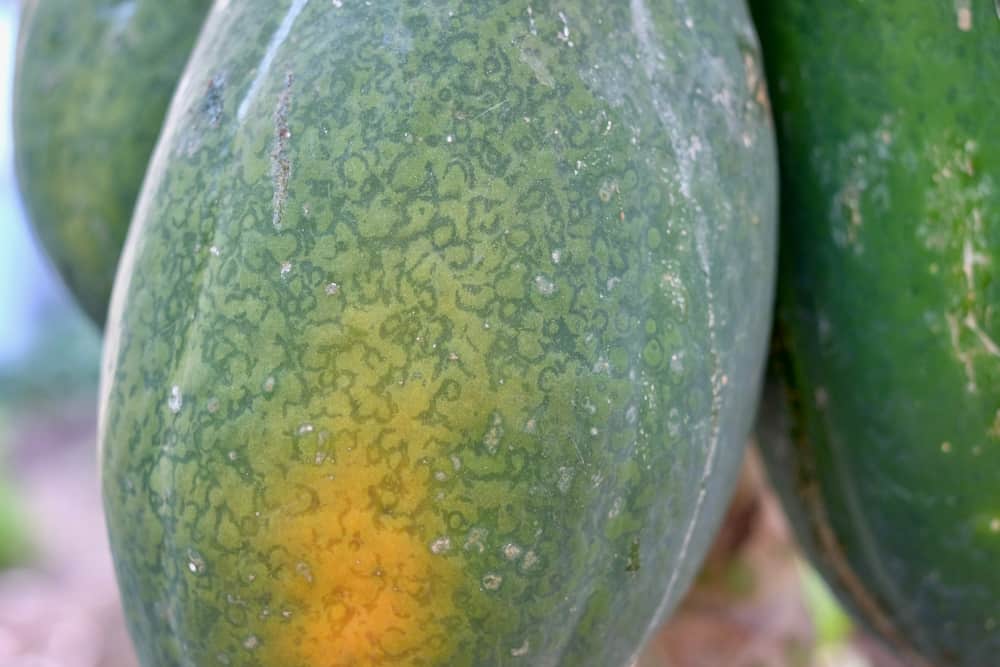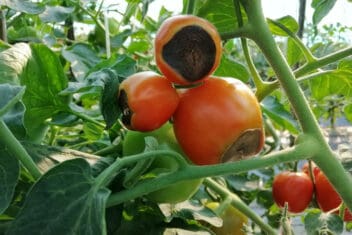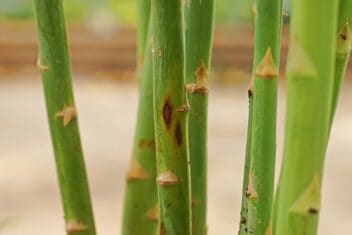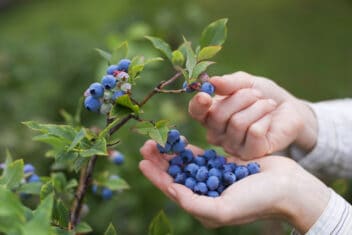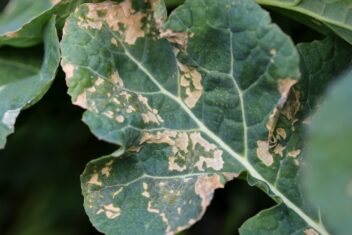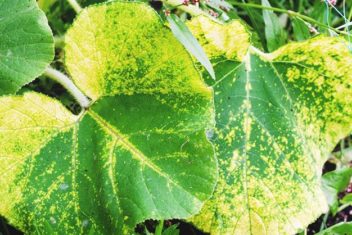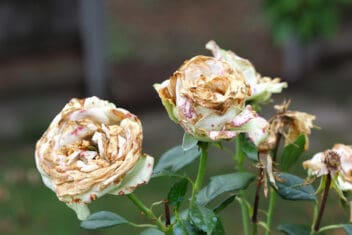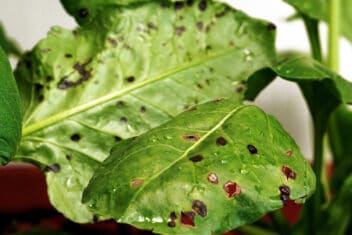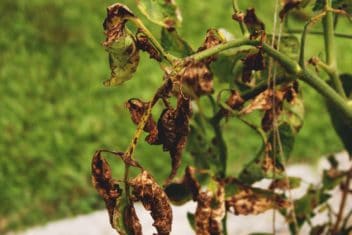Growing plants comes with some challenges. There’s water, pruning, and watching out for diseases such as papaya ringspot virus. To protect your precious plants from this incurable disease, you need to know how to prevent it.
Before you assume that you don’t need to worry about this disease because you aren’t growing papayas, you should know that infects cucurbits as well. That means your melons, squash, and cucumbers are at risk.
We all want our plants to give us a big harvest, right? Here’s how to stop papaya ringspot virus from killing your plants.

What Is Papaya Ringspot Virus?
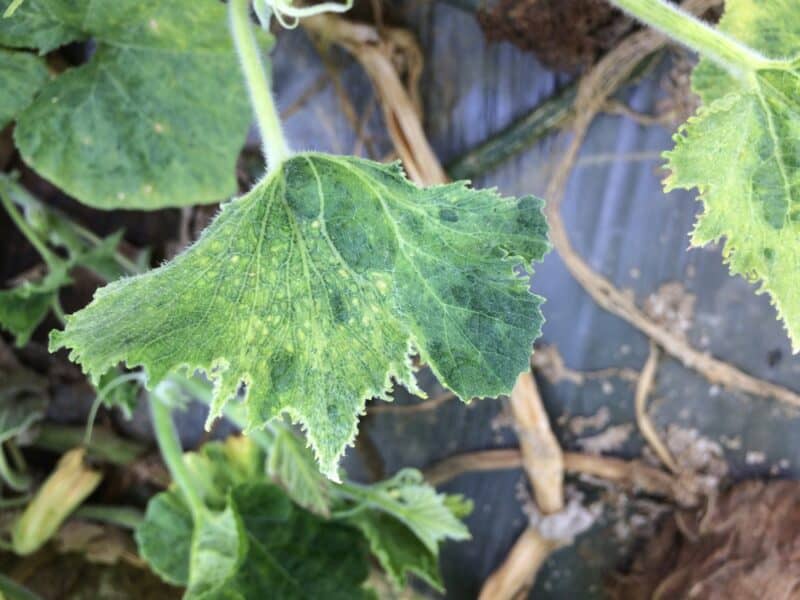
This disease was first detected in 1991 and there are two different varieties that can infect plants. The two varieties are:
- Papaya Ringspot Virus – Type P (PRSV-P), which affects papaya and cucurbits
- Papaya Ringspot Virus – Type W (PRSV-W), which only infects cucurbits
You might also come across the terms papaw ringspot virus, papaw mosaic virus, papaya ringspot potyvirus, and watermelon mosaic virus.
If you come across any of these terms, just know they’re the same disease and caused by papaya ringspot virus.
You might be wondering why you should care if you don’t have a papaya plant in your garden. Unfortunately, this disease also impacts cucumbers, winter squash, pumpkin, and melons.
How to Identify Papaya Ringspot Virus
When it comes to spotting papaya ringspot virus in your crops, you need to keep an eye on the appearance of your plants from the stems to the leaves and the fruit. The symptoms of this disease vary depending on the species of plant infected.
Although these are the most common signs of papaya ringspot virus it can also look like some other diseases that you can find inhabiting your plants and vegetables. For instance, mites can also cause leaves to turn yellow but they don’t have distinct ring patterns.
PRSV Symptoms on Fruit
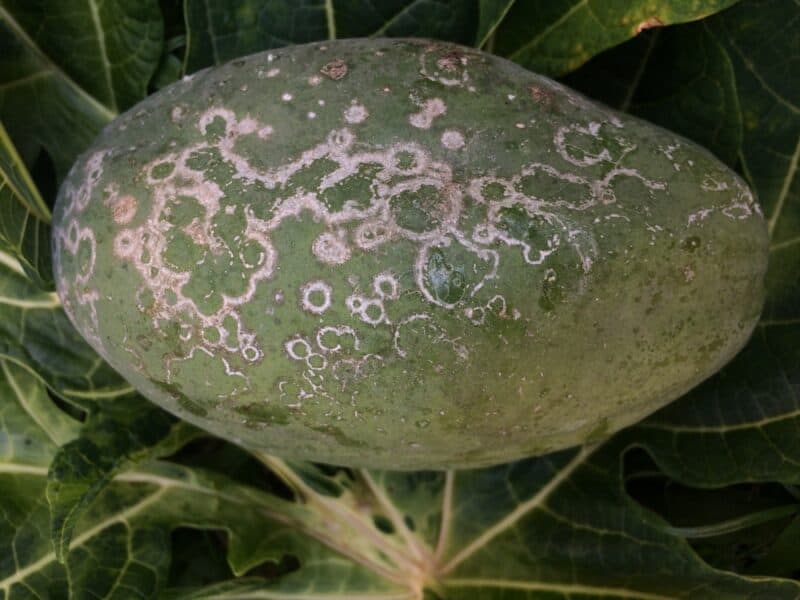
The virus can discolor and destroy fruit. The first sign of PRSV on fruit is small, green ring patterns that appear on the surface. The discolored patches grow even larger as the fruit develops and the disease progresses.
The symptoms of the infection will differ depending on whether the fruit is small or large, so it’s essential to check in on your plants regularly for any sign of discoloration and dark, circular patches.
A healthy, normal papaya should be orange and red but a few green spots are perfectly fine. That being said, if most of the fruit is covered in dark patches then this could potentially be PRSV infecting your plant.
PRSV Symptoms on Leaves
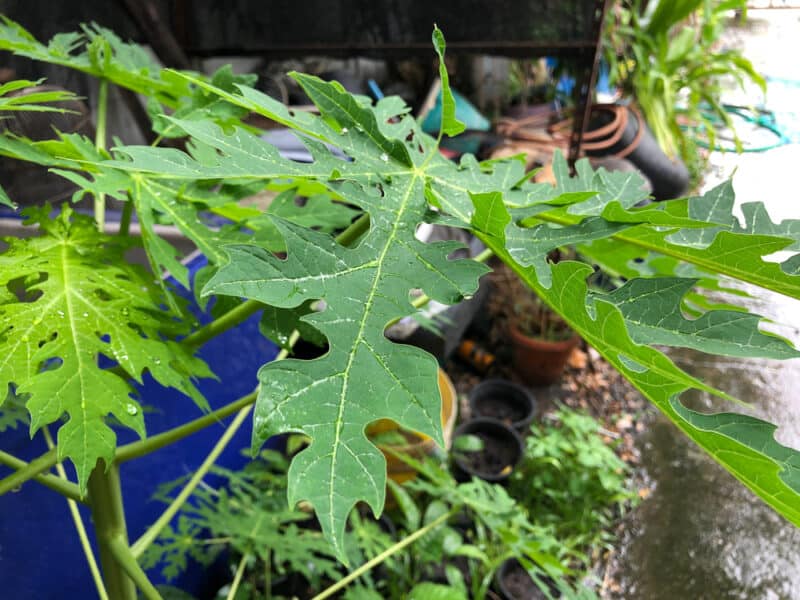
In addition to the color of the fruit, you should also be sure to check leaves on your plants for signs of papaya ringspot virus. The leaves should be healthy, normal-sized, and growing rapidly rather than slow and stunted. They should be bright, their normal color, and not shriveled.
When this virus attacks, you’ll usually see mottling and ruffling on the leaves. You might also see distorted or stunted foliage. If you think the leaves are changing texture and color then it could be papaya ringspot virus.
You also have to watch the plants for yellow mosaic patterns or any other leaf changes. Check for green, orange, or brown colored spots and ring-shaped patterns on your leaves.
PRSV Symptoms on Stems and Roots
Of course, this disease can also infect the stems and roots of your plants. If you have access to the roots and can easily see the stems of the plants then you can check to see if there are any dark green streeks.
Any signs of wet, soaked stems are a big warning sign that papaya ringspot virus is developing.
Treatment for Papaya Ringspot Virus
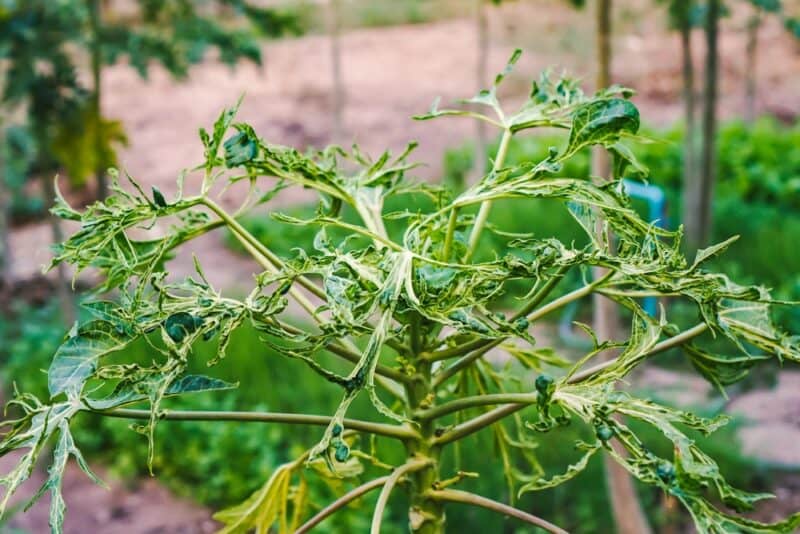
Unfortunately, there isn’t a treatment to cure papaya ringspot virus. You might just need to pull your plants to prevent the disease from spreading. You can also support your plants and hope that you can still get a harvest from your plants.
Fruits and veggies infected with PRSV aren’t dangerous to eat. However, of you leave the plants in your garden, you run the risk of spreading the disease to other plants in your garden or even your neighbor’s garden, as well.
While there isn’t any cure, there are several things you can do to limit the possibility of this disease invading your garden. The best way is to prevent any pests from infecting your plants.
Preventing Papaya Ringspot Virus
The most important part of preventing papaya ringspot virus is keeping aphids out of your garden. Aphids are the main transmitters of PRSV. To learn more about aphids and how to control them, head to our guide.
Trap crops and deterrents such as alliums work well. You can also use a preventative spray program if you know PRSV is a problem in the area.
These pests can infect your plant within 10-15 seconds so you should act quickly if you suspect that there are any in your garden!
You also want to practice good garden hygiene.
Garden Hygiene
No matter if you’re new to looking after plants and crops or you’ve been caring for a homestead for a while, it’s important to familiarize yourself with the basics of good garden hygiene.
To begin with, you want to ensure you’re using clean planting material. That’s why you must buy your seeds and compost from reliable sources and sellers. Otherwise, you might end up accidentally buying a product that is carrying a disease.
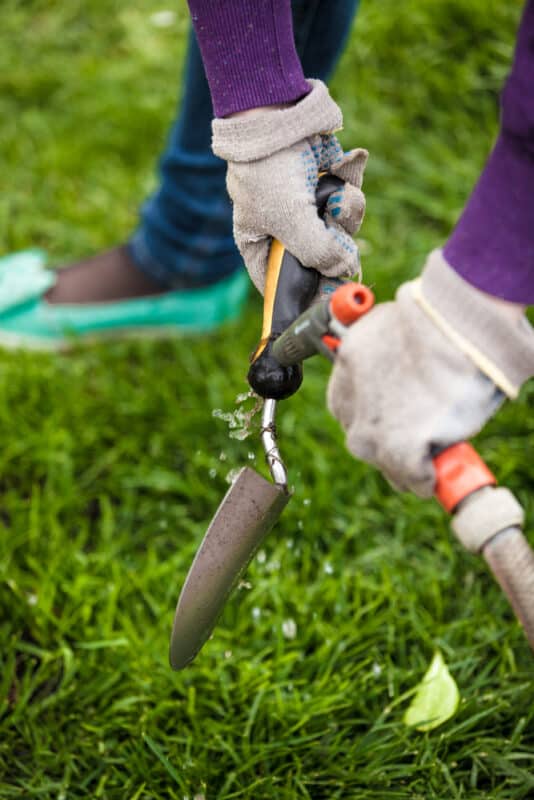
Of course, the other factor in keeping a clean homestead is cleaning the equipment that you use in your garden. You should schedule weekly cleanings of all your tools and machinery using soap and water or a mix of 1:10 bleach to water.
You should always clean your tools immediately after working on any plants that you suspect are carrying pests or diseases. You should also change or clean your shoes and gloves regularly.
Following a frequent cleaning schedule should help you stay on top of the hygiene element and look after your plants. PRSV can travel on equipment and tools, though transmission by aphids is more common.
Still, good hygiene helps prevent other diseases from spreading, which can weaken your plants and make them more susceptible to viral infections.
Papaya Ringspot Virus FAQs
Now that you know about what PRSV is and how to control it you might have a few other questions on your mind. In this section, we’ll discuss the most common questions surrounding the Papaya ringspot virus.
What Is the Lifespan of Papaya Ringspot Virus?
Once the Papaya ringspot virus has infected a plant it’s there for good. It will live on your plant until it dies. On average this virus kills garden plants within 1-2 years after the first infection.
During Which Season Does Papaya Ringspot Virus Appear?
Usually, the Papaya ringspot virus appears during the colder times of the year. Winter is the most common time for this disease to infect plants in warmer regions. You should be extra diligent when looking after your garden during these seasons.
Does This Virus Affect Papaya Production?
Due to the Papaya ringspot virus, the production of papayas in Southeast Asia, Africa, India, South America, and North America has been dramatically reduced. In Hawaii, papaya production has been decimated on some islands.
It can also reduce your cucurbit harvest in your home garden.
